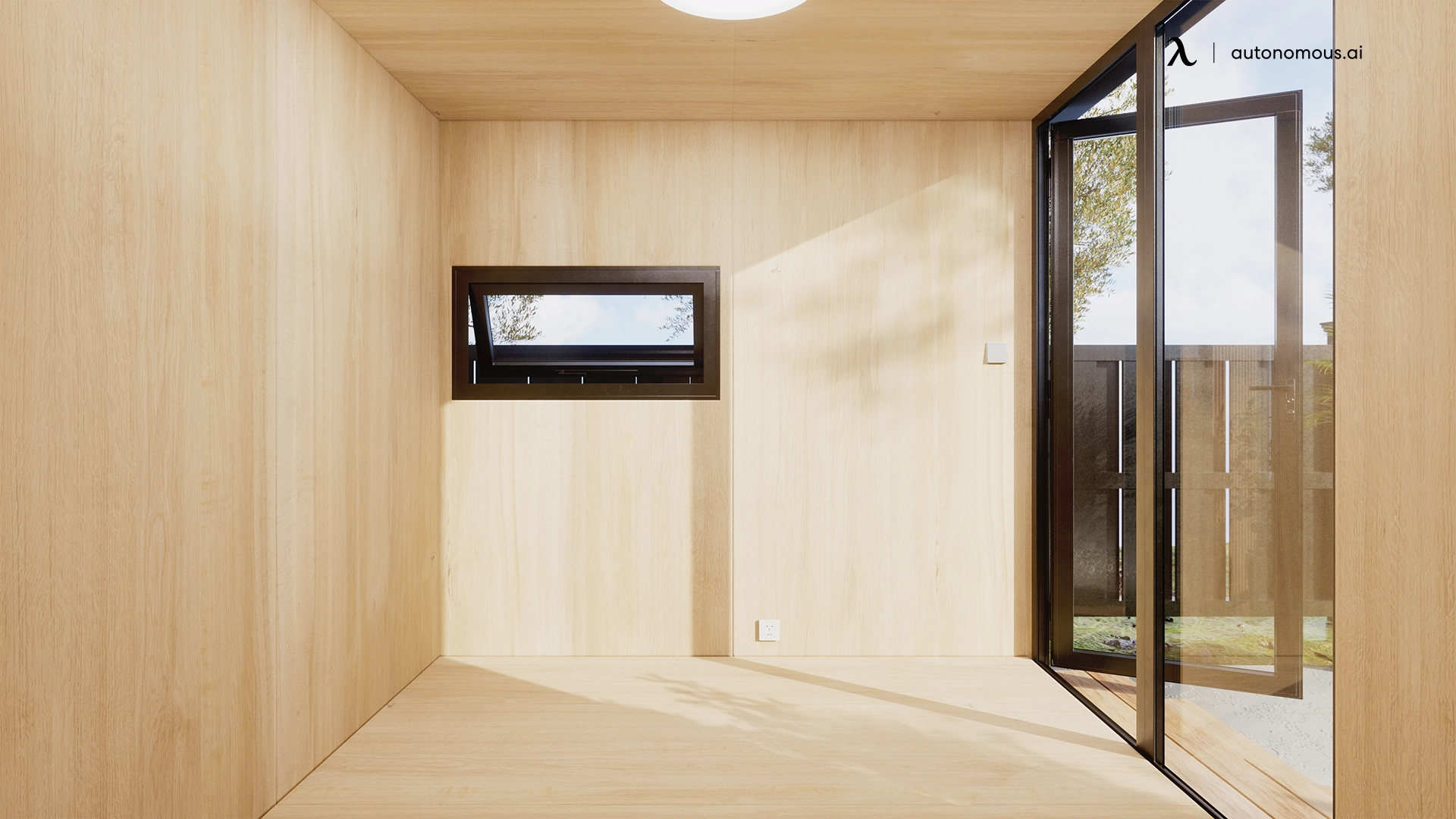
Black Mold vs. Mildew on Wood: What's the Difference?
Table of Contents
You've noticed some suspicious spots on your wooden surfaces, and now you're wondering if it's just a case of mildew or the more sinister black mold creeping in. Don't fret; you're not alone in this situation.
Many of us have found ourselves staring at those pesky patches, scratching our heads in confusion.
In this blog post, we're diving right into the world of fungi to unravel the mystery between black mold vs. mildew on wood.
We'll explore how to identify them and bid them adieu if they've decided to set up camp on your beloved furniture or even your DIY standing desk.
Explaining Black Mold: What You Need to Know
Scientifically known as Stachybotrys chartarum, black mold is a type of fungi that thrives in damp and humid environments.
This sneaky little fungus loves to make itself at home on surfaces like wood, drywall, and even fabric if the conditions are right.
Here's the kicker: black mold isn't just your average, run-of-the-mill fungi. It's the worst kind to exist. Why, you ask? Because black mold produces toxins called mycotoxins that can wreak havoc on your health if you're exposed to them for prolonged periods. Symptoms of black mold exposure can range from mild irritations to serious respiratory problems in extreme cases. Yikes, talk about unwelcome houseguests!
However, why does black mold love to hang out in our homes? Blame it on poor ventilation, water leaks, or even flooding. Basically, anywhere moisture lurks, black mold is bound to follow.
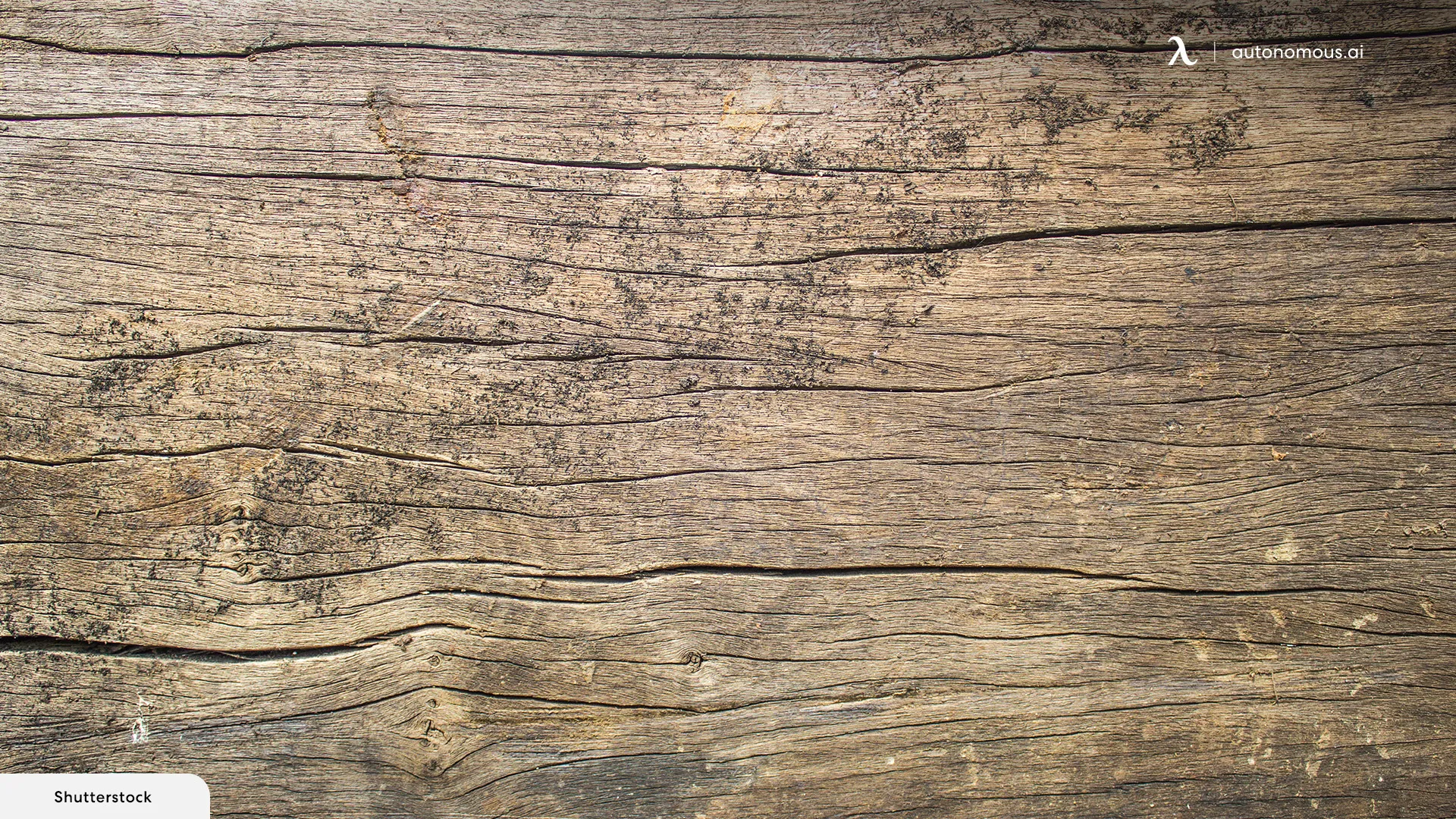
The Lowdown on Mildew
On the other hand, we have mildew. It's like the annoying cousin of black mold – not as sinister, but still a nuisance.
This type of fungi loves to hang out in damp, warm, and humid environments, making your bathroom its favorite hangout spot. You'll often find it lurking on surfaces like tile grout, shower curtains, and wooden furniture.
Unlike black mold, mildew tends to stay on the surface and doesn't penetrate deep into materials.
Not only is it unsightly, but mildew can cause allergic reactions in sensitive people and even damage certain materials if left to thrive.
Luckily, you can remove mildew and mold from wood furniture pieces in many ways. From scrubbing surfaces with DIY solutions to using commercial cleaners, there's no shortage of options to eliminate mildew for good.
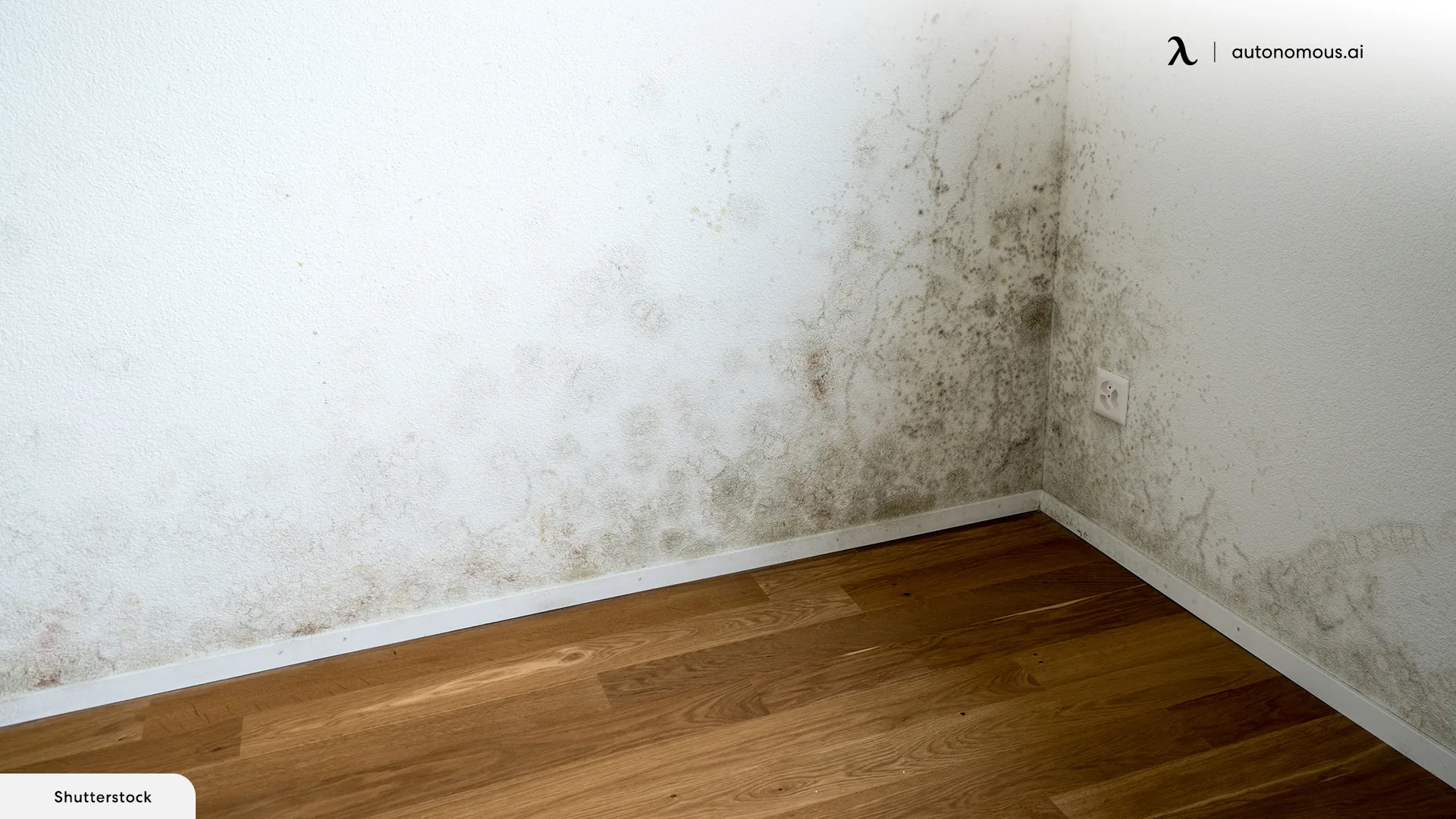
Mildew vs. Mold on Wood Furniture
Here's a detailed table comparing mildew and mold on wood furniture:
| Criteria | Mildew | Mold |
|---|---|---|
| Appearance | Typically white, gray, or yellow; powdery texture | Can be black, green, blue, or other colors; fuzzy or slimy texture |
| Odor | Musty but milder than mold | Strong musty or earthy smell |
| Growth Pattern | Often grows in flat patches on the surface | Can penetrate deeply, growing in irregular patterns |
| Health Risks | Can cause respiratory issues, allergic reactions | More severe health risks including respiratory problems, allergic reactions, and infections |
| Common Causes | High humidity, poor ventilation, damp surfaces | High humidity, water leaks, flooding, poor ventilation |
| Surface Penetration | Generally stays on the surface | Can penetrate deeply into wood |
| Removal Difficulty | Easier to remove; often can be cleaned with household cleaners | Harder to remove; may require professional treatment and strong cleaning agents |
| Preventive Measures | Keep environment dry, improve ventilation, use mildew-resistant products | Control humidity, fix leaks, improve ventilation, use mold-resistant products |
| Growth Conditions | Prefers damp, warm environments | Thrives in moist, warm environments, especially where water damage has occurred |
| Impact on Wood | Can cause discoloration but usually less damage | Can cause significant damage including rot and structural weakening |
| Inspection Signs | Powdery residue on the surface, light stains | Dark stains, fuzzy or slimy patches, strong odor |
| Treatment Methods | Clean with vinegar or mild bleach solution, improve air flow | Clean with stronger bleach solutions, professional mold remediation, improve air flow |
First things first, let's talk about appearances. Mold and mildew may both be fungi, but they have some distinct differences in how they look. Continue reading this section if you want to know how to identify black mold vs. mildew like a pro.
Black mold tends to be slimy or fuzzy in texture and comes in a variety of colors ranging from black and green to orange and even pink. It often grows in patches that spread quickly and penetrate deep into materials like drywall and wood.
On the other hand, mildew usually appears as powdery or fluffy patches that are white or gray at first. However, it can turn yellow or brown over time if left untreated.
Also, black mold thrives in damp, dark, and poorly ventilated areas. It makes spots like basements, bathrooms, and furniture prime real estate for its growth. As mentioned above, mildew prefers warm, humid environments like kitchens and laundry rooms.
If you're still not sure whether you're dealing with mold or mildew, there are a few telltale signs to look out for.
- First, take a whiff. Mold tends to have a musty, earthy odor, while mildew has a more pungent, sour smell.
- Consider the size and spread of the patches. Black mold grows in larger, more widespread colonies, while mildew patches are usually smaller and more localized.
- Check the time it takes for the patches to develop. Mold takes longer to appear and grow. On the other hand, mildew can pop up seemingly overnight, especially in areas with high humidity.
Early detection is vital to preventing these fungi from taking over your home, so stay vigilant and don't hesitate to act at the first sign of trouble.
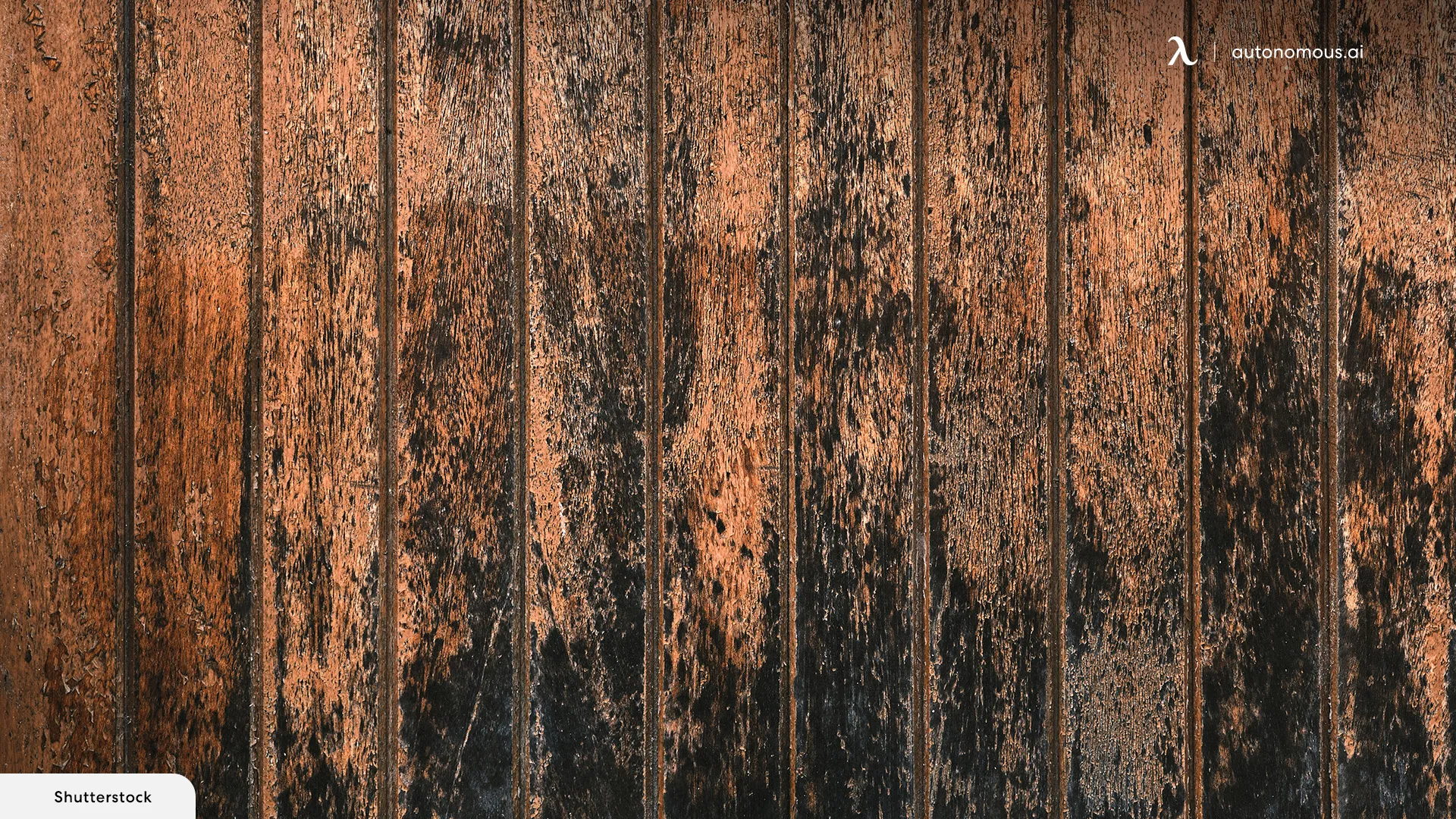
Keep Mold and Mildew at Bay: Essential Tips for a Healthy Home
If you're like us, you want to keep your living space clean, cozy, and free from any unwanted intruders.
Lucky for you, we have some tips up our sleeves to help you prevent fungi from making themselves at home.
Keep It Airy
Good ventilation is your best friend when it comes to preventing mold and mildew growth. Make sure your home is well-ventilated by opening windows and using exhaust fans, especially in areas prone to moisture buildup, like the bathroom and kitchen.
Say No to Standing Water
Stagnant water is like a welcome mat for mold and mildew. Be sure to fix any leaks or water damage promptly.
Don't let water linger, whether it's a dripping faucet or a leaky pipe. Nip it in the bud before mold has a chance to take hold.
Keep Surfaces Dry
Moisture is mold and mildew's best friend, so do your best to keep humidity levels in check. Invest in a dehumidifier to keep moisture levels below 50%, especially in humid climates or during the rainy season.
Mind Your Wood
If you're a fan of DIY computer desk setups, be extra vigilant when it comes to preventing mold and mildew.
Opt for materials that are naturally resistant to mold. The best wood for desktop setups include cedar or teak. Make sure to keep them clean and dry to prevent infestation.
Keep It Ergonomic
While you're busy sprucing up your home, don't forget about ergonomics! Invest in a comfortable and adjustable L-shaped standing desk to keep your office comfy and productive.
Thanks to advanced desk ergonomics, adjusting the height and cleaning the space underneath is also easier.
Clean Up Religiously
Regular cleaning is key to keeping mold and mildew away from your home. Use a mixture of water and vinegar to clean surfaces prone to fungal growth, like tile grout, shower curtains, and even your trusty standing desk.
Take Action
If you're still wondering how to get rid of black mold on wood or are constantly Googling, "What does black mold on wood look like?" - don't wait around.
Consult a professional if you suspect a mold or mildew problem in your home, especially if it involves dangerous black mold on wood.
Your Guide to Banishing Mold and Mildew for Good
With the right tools and know-how, you can kick uninvited fungi to the curb and reclaim your space.
Proper Gear
Before you tackle those moldy patches, make sure you're adequately equipped. Grab some gloves, a mask, and safety goggles to protect yourself from harmful spores and chemicals.
Complete Assessment
Take a good look around your home and identify any areas affected by mold or mildew. Common spots include humid bathrooms, basements, kitchens, and areas with poor ventilation.
If you're dealing with mold on wood furniture or surfaces, like your computer desk, pay extra attention to those areas. Throw away wet wallpaper and rotted fabric.
Cleaning Solution
If you see mild cases of mold and mildew, a simple mixture of water and vinegar can do the trick. Mix equal parts water and vinegar in a spray bottle and give it a good shake.
However, you may need to use a commercial mold and mildew bleach cleaner for tougher cases. Just be sure to follow the instructions carefully and not get any of the products on your skin.
Scrub Thoroughly
Armed with your cleaning solution, it's time to get scrubbing! Use a stiff-bristled brush or sponge to wash away the mold or mildew.
Pay extra attention to any stubborn spots. Don't forget to wear your mask and gloves to protect yourself from exposure.
Rinse
Once you've scrubbed away the mold or mildew, rinse the area thoroughly with clean water and allow it to dry completely. This will help prevent any leftover spores from regrowing and spreading.
Repeat the process as many times as possible to get rid of mold or mildew stains. Make sure you also dry the surface under direct sunlight (at least 48 hours) for the best results.
Adverse Health Effects of Mold and Mildew on the Body
One of the most common health effects of mold and mildew exposure is respiratory problems. Breathing in mold spores can irritate your airways, leading to symptoms like coughing, wheezing, and shortness of breath.
On the other hand, mold and mildew can exacerbate symptoms and make breathing harder for those with asthma or allergies.
Allergic Reactions
If you find yourself sneezing, itching, or experiencing a runny nose whenever you're indoors, chances are you have some kind of fungus in your home. These allergic reactions can range from mild to severe and significantly impact your quality of life.
Skin Irritation
On top of that, mold and mildew exposure can also affect your skin, causing irritation, redness, and even rashes.
If you notice your skin acting up after spending time in a moldy environment, it could be a sign that your body is reacting to the presence of mold spores.
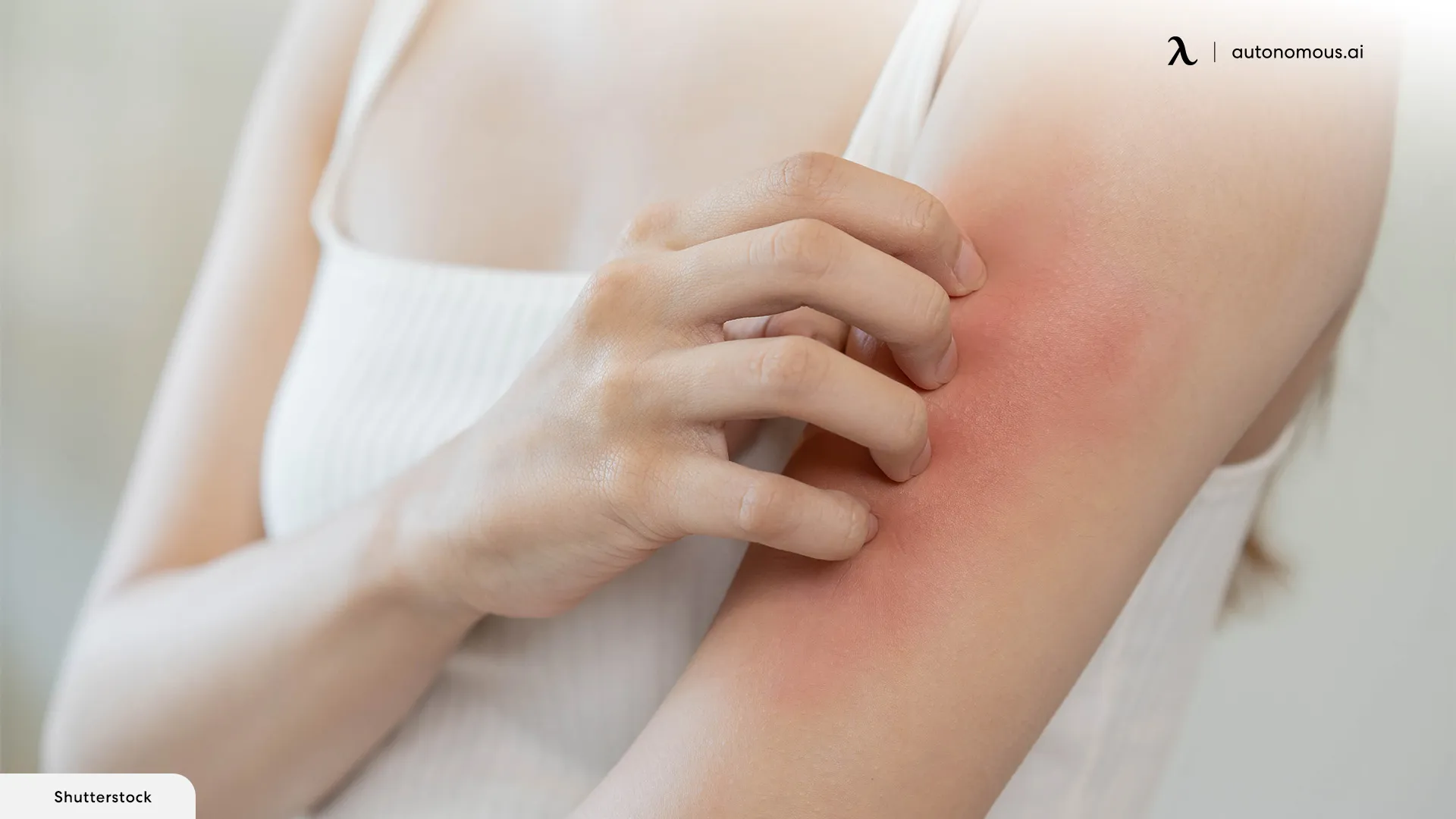
Respiratory Infections
Prolonged exposure to mold spores can increase your risk of developing conditions like bronchitis or pneumonia. This can be mainly dangerous for young children, the elderly, and those with underlying health conditions.
Neurological Symptoms
While less common, some studies have suggested a potential link between mold exposure and neurological symptoms like headaches, dizziness, and memory loss.
Although we need more research to understand the connection entirely, it's clear that mold and mildew can affect more than just your respiratory system.
If you're experiencing symptoms of exposure, don't hesitate to seek medical attention. Your doctor can help diagnose any underlying health issues and recommend treatment options to alleviate your symptoms.
What Does Mold Look Like on Clothes?
You open your closet to pick out your favorite outfit, only to be greeted by an unwelcome sight – suspicious spots speckling your clothes. Could it be mold? Don't panic just yet; we're here to help you decipher the signs and act against this fashion faux pas.
As mentioned above, mold typically appears as fuzzy or slimy spots in various colors, including black, green, white, or even pink.
You can find them on the surface of your clothes or in the seams and folds, especially if your garments have been stored in damp or humid conditions.
Now, you might be wondering how mold ended up on your clothes in the first place. Well, blame it on poor ventilation or even a forgotten load of laundry left languishing in the washing machine for too long.
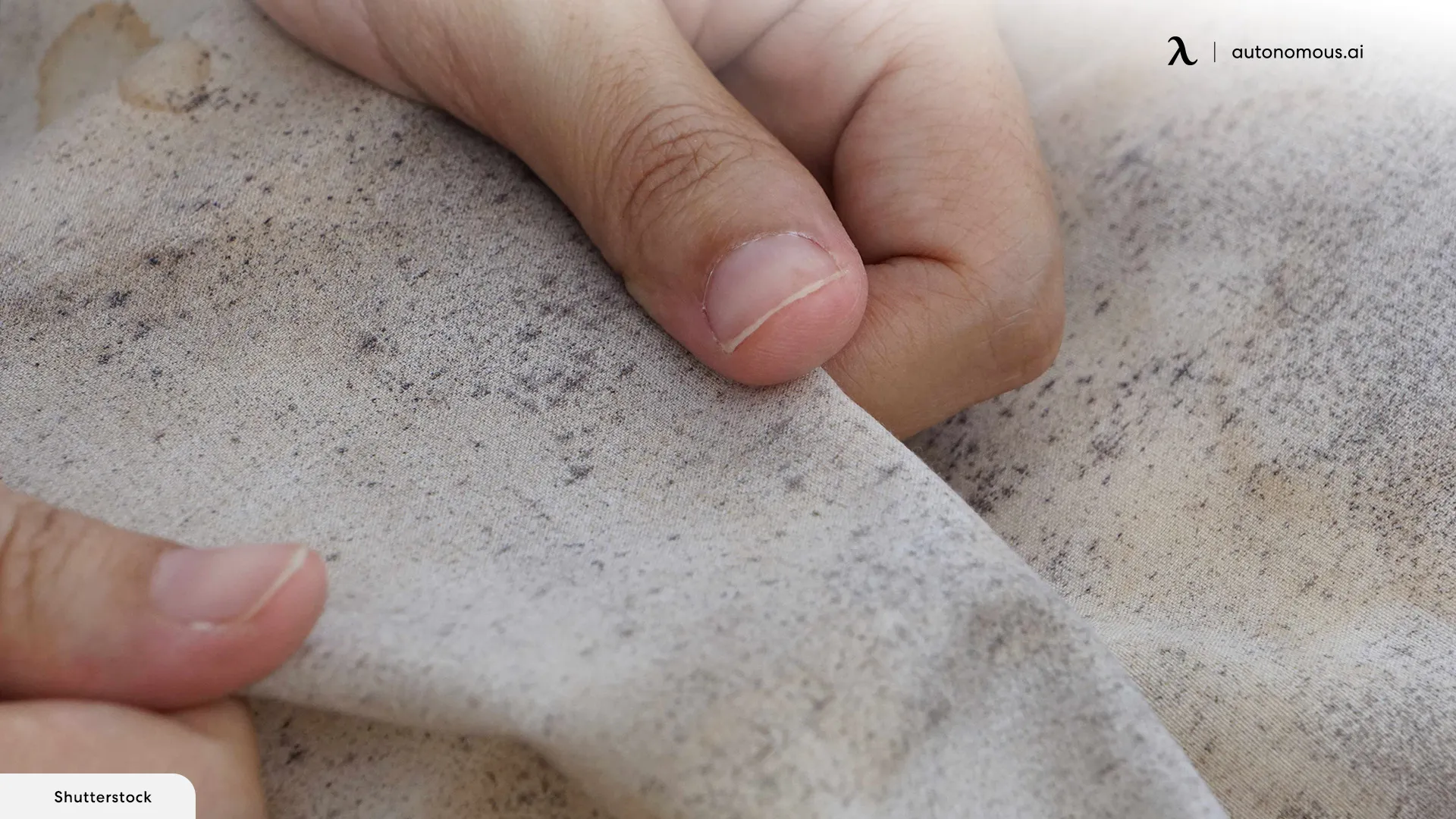
Still, how do you know if those suspicious spots are indeed mold? Other than the appearance, here are a few signs to look out for:
- Smell: Mold has a distinctive musty odor that's hard to miss. If your clothes smell damp or earthy, it could be a sign that mold is lurking nearby.
- Location: Pay attention to where the spots are on your clothes. Black mold thrives in dark, damp areas, so check the seams, folds, and areas that don't get much airflow.
Remove the affected garments from your closet and inspect them closely. If the mold is limited to a few items, you can salvage them with a thorough cleaning.
Launder machine-washable pieces using hot water and detergent. Hang them to dry in direct sunlight, which can help kill mold spores. However, for delicate or dry-clean-only fabrics, consult a cleaner for advice on how to remove mold safely.
Store your clothes in a cool, dry place with good ventilation, and avoid leaving damp or wet garments sitting for extended periods. Consider using moisture-absorbing products or dehumidifiers in your closet to help control humidity levels.
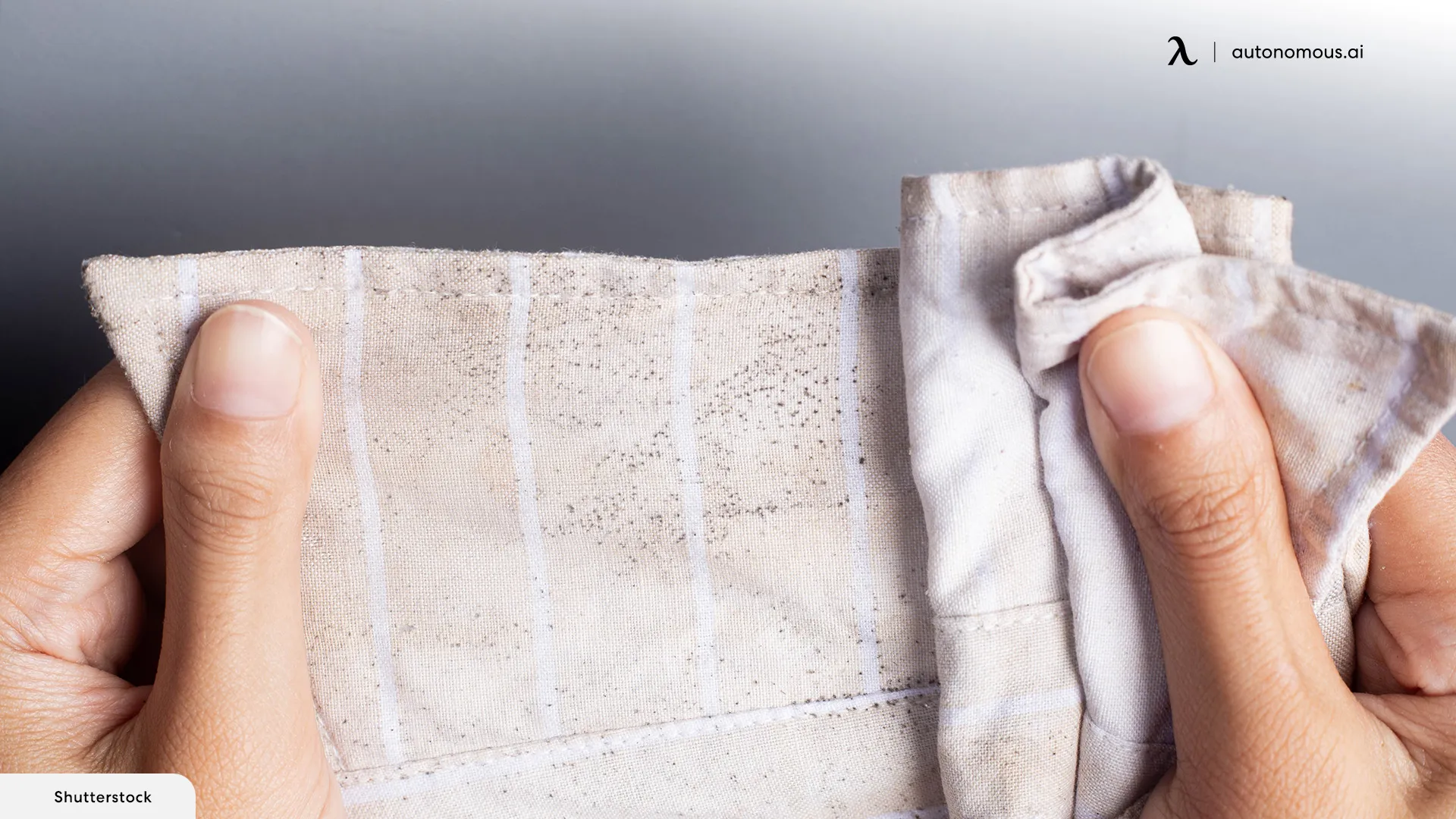
Final Words
Understanding the difference between black mold vs. mildew on wood is essential for maintaining a healthy, mold-free home environment.
Instead of settling for traditional tables, choose ergonomic alternatives with customizable desk dimensions. Sit-stand desks are easier to clean, thus making it simpler to prevent mold or mildew growth underneath.
Keep your home well-ventilated, promptly fix leaks or water damage, and clean regularly. Consider investing in a dehumidifier to keep humidity levels in check and minimize the risk of fungal growth.
Here's to eliminating black mold and mildew from your home once and for all – and to many happy, fungi-free days ahead!
Stay connected with us!
Subscribe to our weekly updates to stay in the loop about our latest innovations and community news!
Interested in a Link Placement?
Spread the word



/https://storage.googleapis.com/s3-autonomous-upgrade-3/production/ecm/230914/bulk-order-sep-2023-720x1200-CTA-min.jpg)

/https://storage.googleapis.com/s3-autonomous-upgrade-3/production/ecm/230824/Alex-28a9a700-5aef-45ab-918e-1bbc4cc5722e.jpg)